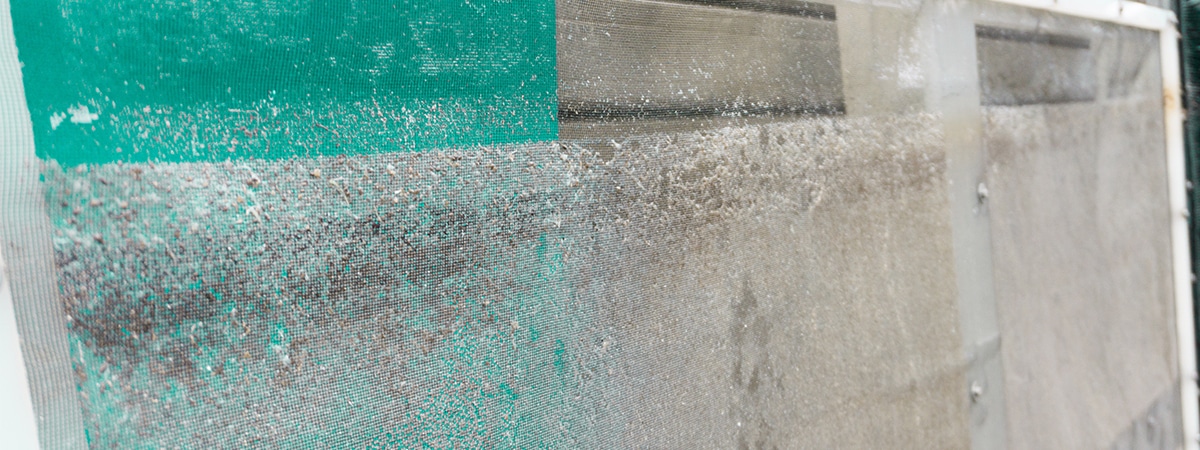Bacteria and active biofilms

The diversity of bacteria in nature can hardly be surpassed. However, they are so small that we cannot recognize them with our eyes. As invisible pathogens they are very suspicious to us humans. Only modern molecular biology has shown us that they are necessary on the skin and in the intestines to maintain our health. And bacteria are also indispensable in food production and processing. Certain species have long been used in the production of foods such as cheese, sourdough bread and sauerkraut. But what role do bacteria play in fish farming, especially in closed aquaculture systems?
Bacteria in aquaculture
Bacteria can only multiply if they are given food. Since their food is often insignificant waste material, this is hardly noticeable: Residual substances disappear, but a small number of bacteria remains. In aquaculture, for example, bacteria use leftover feed. However, they mainly live in and from the excrements of the fish. As in nature, they “remineralize” the sometimes-poisonous excrements of the animals by decomposing organic food components to such an extent that ultimately only CO2, H2O and various inorganic substances (phosphate, ammonium, nitrate, atmospheric nitrogen) remain. In our article Nitrification and Denitrification we have explained this degradation process in more detail.
Bacterical risks
In addition to the indispensable contribution of bacteria to water purification, there are also risks in closed systems:
- If the bacteria receive food, they multiply. Above a certain number in a volume of water, we notice them because they cloud the water.
- Bacteria consume oxygen during the conversion of substances. The fish also need oxygen. In bacteria-rich, turbid water, this competition can lead to a deadly lack of oxygen for the fish. The fish are particularly endangered in summer, because in warm water not only less oxygen is dissolved from the air into the water, but at the same time the oxygen consumption and the reproduction of the bacteria is increased.
- Fish keep bacteria away from themselves by forming slime. Mucilage is a form of organic carbon and therefore in principle less degradable than other organic substances, but it is only a question of number when the bacteria manage to break through the layer. So, if there are a lot of slime-degrading bacteria in the water, this will affect the self-protection of the fish. Aggressive bacteria can penetrate contaminated water right up to the skin and create entry points for pathogens there. The animals then become more susceptible to diseases and their resistance to pathogens and parasites decreases.
It is therefore important to prevent too many bacteria from being present in the process water. In order to prevent the risk of bacteria, a quick elimination of the nutrient sources in the water is as important as a regular removal of the bacteria themselves. Both happens with the help of mechanical filter units, the drum filter and the skimmer, which remove both large and small particles from the plant. This not only reduces the nutrient supply for the bacteria, but also their number. Consequently, the germ load of the fish and the competition for oxygen between bacteria and fish remains technically controllable.
Biofilms in recirculation systems
In nature, bacteria often organize themselves in biofilms: Chemical processes such as nitrification and denitrification are the joint efforts of different types of bacteria, which they perform in a very small space, the biofilm. For other bacteria, a lack of nutrients causes them to form an extracellular, sticky matrix with which they can attach themselves to surfaces and extract small particles as well as dissolved nutrients from the passing water. Due to the above described risks caused by bacteria, care is taken in the bearing tank and thus in the immediate vicinity of the animals to ensure that the surfaces (e.g. tank walls, nets, probes etc.) are as small as possible for biofilms and easily accessible for the plant operator. This should allow the plant operator to regularly wipe off biofilms. In the individual biofilters (nitrification and denitrification), on the other hand, structured carrier materials („biofilter pellets“ or „bio-carriers“) provide the bacteria with a particularly large surface area for colonization. In addition, the living conditions for bacteria are optimized in terms of process technology. For example, a filter is particularly well ventilated so that the bacteria find a lot of oxygen and prefer to stay in this filter instead of in the tank. During their stay in the filter, the bacteria then metabolize the excrements of the fish so that the concentration of waste products in the tank always remains low and does not endanger the fish.
In summary, the secret of a healthy clear-water aquaculture consists of an effective mechanical removal of solids and bacteria and a small surface-to-volume ratio in the tank. In addition, it is important to design the various biofilters sufficiently in size and surface area to ensure that the bacteria can effectively degrade the residual substances by means of the optimized conditions prevailing there.
Further informationen about the SEAWATER Cube
Check out more facts about our system and the technology.
References
— Weuster-Botz, D.; Chmiel, H.; Takors, R.: Bioprozesstechnik. 4. Auflage, Springer-Verlag, 2018.
— Ernst, A.: MOSA1 – Mikrobielle Optimierung von Standardkomponenten in der Aquakultur. 1: Beckenabtrennungen: Netze oder Rechen?. Vortrag zum Abschlussbericht, 17.09.2019.
— Schooltink, H.: Mikrobielle Biofilme – Gemeinsam zur Attacke. Pharmazeutische Zeitung, Ausgabe März 2015.
Image source
SEAWATER Cubes